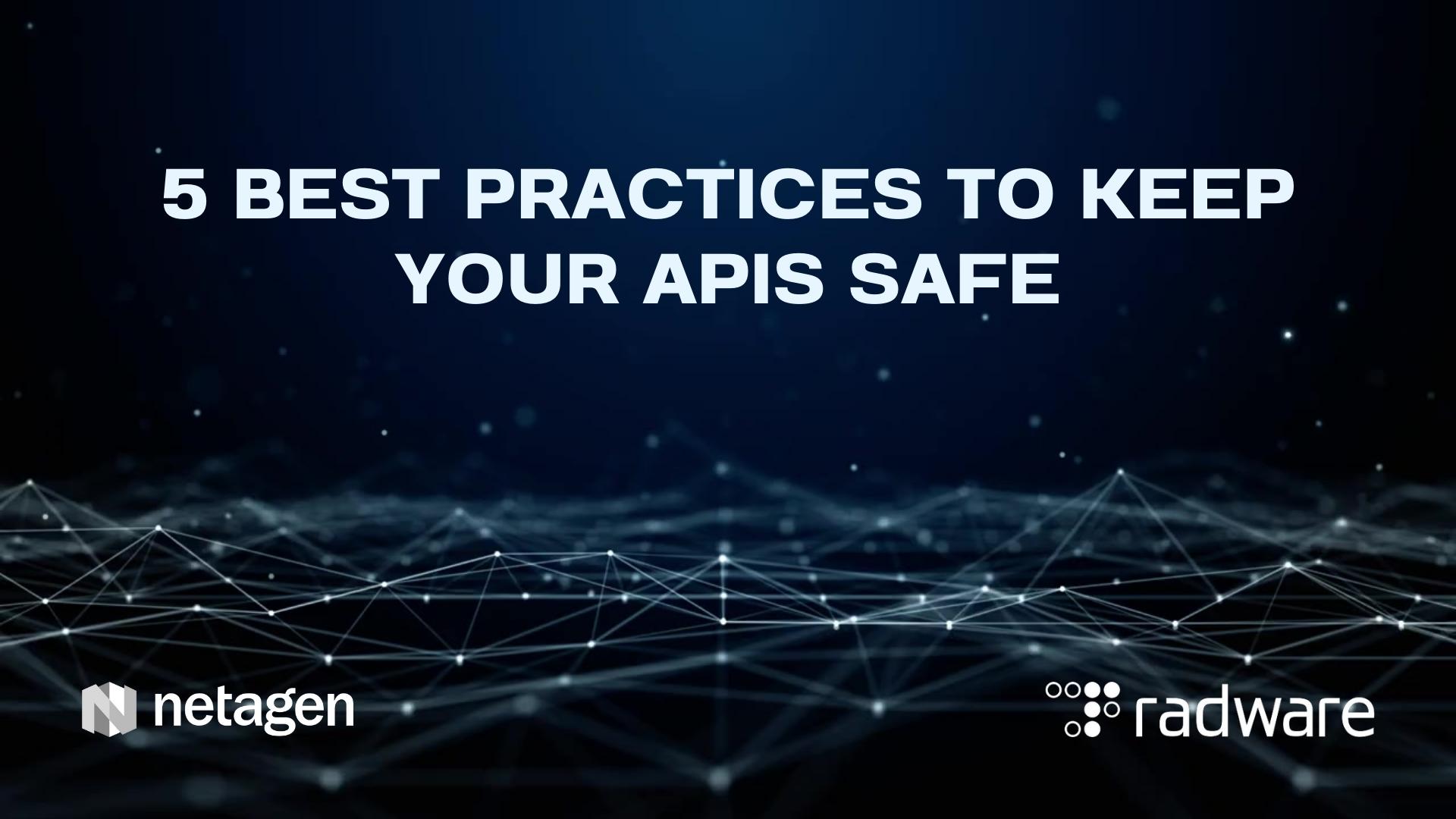5 Best Practices to Keep Your Application Programming Interfaces (APIs) Safe

The reliance on application programming interfaces (APIs) is already enormous, probably more than most people know. That reliance will only grow.
While we’re working away on an application, APIs are seamlessly, smoothly, and invisibly accomplishing a variety of tasks behind the scenes, like pulling up data you’ve requested from another application while you’re still using yours. They’re a great, helpful, and necessary part of our lives. But like all things digital, they come with a risk. They often expose vulnerabilities to cyber attackers.
The good news is there’s something you can do to protect your APIs. So start, review the following 5 best practices to keep your APIs safe.
1. Build a Strong Security Strategy
WAAPs (Web application and API protection) are pretty much the industry standard for protecting APIs. Here’s why — they’re easy to deploy at scale and they deliver comprehensive API security. When it’s time to evaluate WAAP offerings, make sure they include bot management, a WAF (web application firewall), and API and DDoS protection. This provides a great foundation for your organization’s security strategy. It means you’ll have comprehensive protection to guard against the many types of cyber threats ready to pounce on applications, steal valuable data and shut down your operations.
A key goal when selecting the right WAAP solution is that it delivers comprehensive security. It’s easy to fall into the trap of selecting solutions that, while they may be best-of-breed, only tackle one thing. For instance, they may be good at identifying and categorizing attacks, but they stop there. The next critical step is mitigation, but they have limited functionality at this point. The results are data breaches, frustrated — often lost — customers, and a hit on your organization’s good name in the market.
2. Need to Secure APIs? Automation is Your Friend
While rule- and policy-based security checks are an integral part of Application Programming Interface (API) development, automation needs to be incorporated when possible. Doing so saves time and prevents manual errors. Machine learning (ML)-based application security is adaptive and automatically detects and responds to attacks targeting Application Programming Interface (API) vulnerabilities. Just make sure they’re added via automatic policy generation once a new web application has been deployed.
ML protects APIs against a number of threats, including protocol attacks, parameter tampering, token manipulations, and more. A robust, enterprise-grade firewall will use behavioral protection after it has imported and cataloged APIs.
3. Check Your (Security) Assumptions about 3rd Parties
Over the past 5-10 years, organizations have heard about, ad nauseam, digital transformation and the importance of achieving it. The rush to get there has introduced and exposed security vulnerabilities. The growth of APIs is no exception. While it’s nice to believe that 3rd party vendors (this includes cloud providers) always have security top of mind, that’s a risky assumption.
To start with, know how 3rd parties are accessing your organization’s data. You need comprehensive visibility into where all APIs are hosted, who can access them, and exactly what data they can get to.
While there are a number of API management tools on the market, many do little more than provide visibility and API monitoring capabilities. However, they don’t provide much in the way of protection. An Application Programming Interface (API) gateways provide IP filtering and basic API authentication but stops short of providing automated protection against attack vectors.
4. Pull the Security Team into CI/CD Early and Often
Your organization’s security team needs to be a part of the application/API development process from the start. It may sound obvious, but, according to Radware’s The State Of Web Application And API Protection report, a stunning 92% of organizations stated that their security staff had a limited influence on CI/CD (continuous integration/continuous deployment).
Security shouldn’t be slapped onto APIs and applications after they’ve been developed. DevSecOps should be an integral component in the API development lifecycle. This way they can address security issues when they occur. After all, DevSecOps is responsible for ensuring applications are secure. So, why shouldn’t they be included early and often?
5. Security, DevOps and your CI/CD Pipeline — 5 Key Elements to Assist in the Evaluation
The introduction and reliance on DevOps and the CI/CD pipeline have successfully enabled organizations to create and deploy applications at high speeds without compromising productivity and agility. While evaluating the right WAAP solution for your organization, consider the following key elements. The solution should accommodate and positively affect each of them.
1. Visibility
Make sure visibility doesn’t stop at APIs. Also, the solution needs to include performance metrics and provide, ultimately, a 360° view that allows you to see security and performance issues. And, of course, it needs to be easy to navigate and understand. This is when having a single pane-of-glass monitoring and API management dashboard is key.
2. Scalability
Elasticity is another way of defining scalability in a security solution. It needs to be able to grow and scale to accommodate your needs. And a great way for them to accomplish this is by having tools that allow for it, like auto-learning and advanced options for policy- and configuration-setting.
3. Security against known and unknown threats
Most solutions should have the ability to immediately detect new and altered applications in the CI/CD pipeline. Just make sure to take it a step further. You need a solution that automatically generates and optimizes security policies.
4. Consistent, unified security of data centers, cloud environments, and more
Each organization’s architecture is like a fingerprint; no two are alike. That’s why the solution you select must accommodate the architecture, regardless of your cloud or data center environment. You need to be able to fine-tune the solution to meet your needs. If you have to shoehorn your architecture into the solution to meet its needs, move on and continue the evaluation process.
5. Integration with your existing tools and systems
As previously mentioned, your architecture and needs are unique to your organization. You’ve selected tools and systems to address them. That’s why it is critically important that your security solution integrates seamlessly with your existing tools and systems. You can’t afford to have a new security solution disrupt applications, release cycles, and productivity.
Understand Threats, Then Implement the Best
With our growing reliance on APIs in Canada, it’s important to ensure they are protected with the best WAAP solution available. That’s why it’s so important to include the 5 key elements when evaluating them. But the evaluation should go beyond that. It’s essential to understand today’s threat landscape, especially related to APIs. Discover how Netagen and Radware can help you secure your APIs. Contact us today to learn more!

